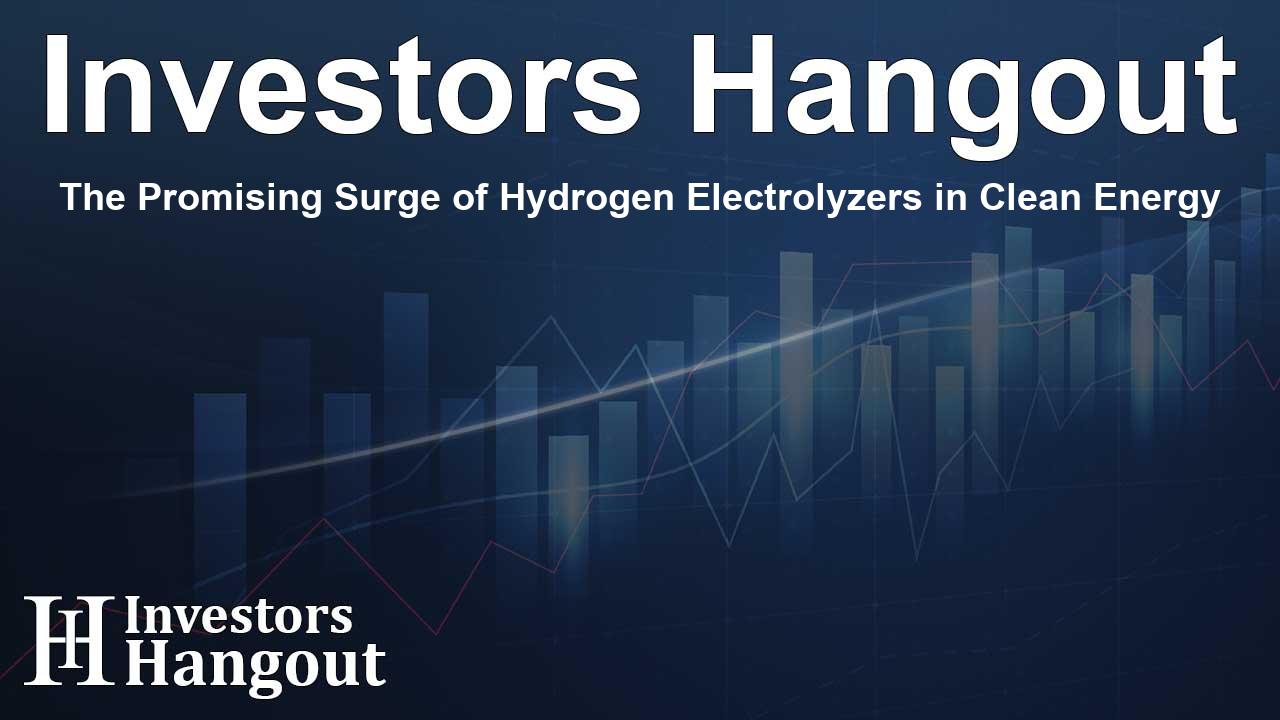The Promising Surge of Hydrogen Electrolyzers in Clean Energy

Hydrogen Electrolyzer Market Growth
As the world shifts towards sustainable energy solutions, the hydrogen electrolyzer market is on a remarkable trajectory. Set to expand from an estimated USD 1.75 billion in 2025 to an astounding USD 40.12 billion by 2032, this growth reflects an impressive compound annual growth rate (CAGR) of 56.4%. This acceleration underscores hydrogen's pivotal role in addressing climate change and promoting cleaner, more sustainable energy alternatives.
Key Insights into the Hydrogen Electrolyzer Market
Market Dynamics
The global hydrogen electrolyzer market is forecasted to proliferate nearly twenty-three times, driven primarily by the increasing global demand for clean energy. Analysts predict that this sector will experience significant growth as hydrogen emerges as a critical element in transitioning to greener energy solutions.
Technological Advancements
Among the various technologies, the Proton Exchange Membrane (PEM) segment is projected to contribute around USD 0.65 billion in revenue by 2025, marking it as a significant player in the market. The need for efficient integration between power generation sources and electrolyzers is crucial, with segments such as the 500 kW category expected to represent a substantial share of the market.
Factors Influencing Market Expansion
Growing Clean Energy Demand
The increasing preference for renewable energy sources like solar and wind power is a notable driver of market growth. The International Energy Agency (IEA) projects that demand for clean energy will escalate significantly by 2050, thus enhancing the hydrogen electrolyzer market’s foundational growth.
Industrial Applications
The chemical industry ranks as the leading consumer of hydrogen electrolyzers, projected to maintain nearly 60% of the market share by 2025. As industries increasingly adopt clean hydrogen for manufacturing and energy production, the deployment of hydrogen electrolyzers will likely amplify.
Challenges Facing the Hydrogen Electrolyzer Market
Despite its optimistic outlook, the hydrogen electrolyzer market does face challenges. High initial capital investment and dependence on renewable energy sources could impede growth rates. Advanced electrolyzers, while innovative, tend to be costly, making mass adoption a challenge for smaller companies.
Government Initiatives and Their Role
Governments worldwide are recognizing the importance of hydrogen technologies in meeting climate goals. Initiatives such as the introduction of tax incentives and subsidies are fostering greater adoption of hydrogen electrolyzers, ensuring that manufacturers can capitalize on new opportunities.
Examples of Government Support
One notable example is the tax credits introduced under the US Inflation Reduction Act, which encourages the installation of electrolyzers. Such government backing is essential for fostering growth in the hydrogen electrolyzer industry.
Emerging Trends in Hydrogen Electrolysis
Innovation and Integration
Combining hydrogen production with renewable energy is becoming a standard trend. Electrolyzers can stabilize power grids, storing excess energy from renewable sources for later use. This integration is paramount for enhancing energy efficiency and ensuring consistent power supply.
Collaborations Boosting Market Potential
Strategic partnerships among energy companies, technology providers, and government entities are driving advancements in electrolyzer technology. These alliances are crucial for expediting the development and commercialization of hydrogen solutions.
Future Perspectives of the Hydrogen Electrolyzer Market
As we look forward, the hydrogen electrolyzer market promises robust growth, fueled by the increasing demand for clean energy and enhanced hydrogen infrastructure. With continuous technological advancements, the market is set to evolve, enabling more industries to transition smoothly towards a sustainable future.
Frequently Asked Questions
What is the projected growth of the hydrogen electrolyzer market?
The hydrogen electrolyzer market is expected to grow from USD 1.75 billion in 2025 to USD 40.12 billion by 2032.
What factors contribute to the growth of the market?
Key factors include rising demand for clean energy solutions and government incentives promoting hydrogen technologies.
Which industries are the largest consumers of hydrogen electrolyzers?
The chemical industry is projected to remain the leading consumer, constituting nearly 60% of the market share by 2025.
What challenges does the market face?
Challenges include high initial costs and reliance on renewable energy sources, which can limit accessibility for smaller enterprises.
How do government initiatives affect the hydrogen electrolyzer market?
Government initiatives, including tax credits and subsidies, are instrumental in supporting market growth and encouraging wider adoption of hydrogen technologies.
About The Author
Contact Henry Turner privately here. Or send an email with ATTN: Henry Turner as the subject to contact@investorshangout.com.
About Investors Hangout
Investors Hangout is a leading online stock forum for financial discussion and learning, offering a wide range of free tools and resources. It draws in traders of all levels, who exchange market knowledge, investigate trading tactics, and keep an eye on industry developments in real time. Featuring financial articles, stock message boards, quotes, charts, company profiles, and live news updates. Through cooperative learning and a wealth of informational resources, it helps users from novices creating their first portfolios to experts honing their techniques. Join Investors Hangout today: https://investorshangout.com/
The content of this article is based on factual, publicly available information and does not represent legal, financial, or investment advice. Investors Hangout does not offer financial advice, and the author is not a licensed financial advisor. Consult a qualified advisor before making any financial or investment decisions based on this article. This article should not be considered advice to purchase, sell, or hold any securities or other investments. If any of the material provided here is inaccurate, please contact us for corrections.
